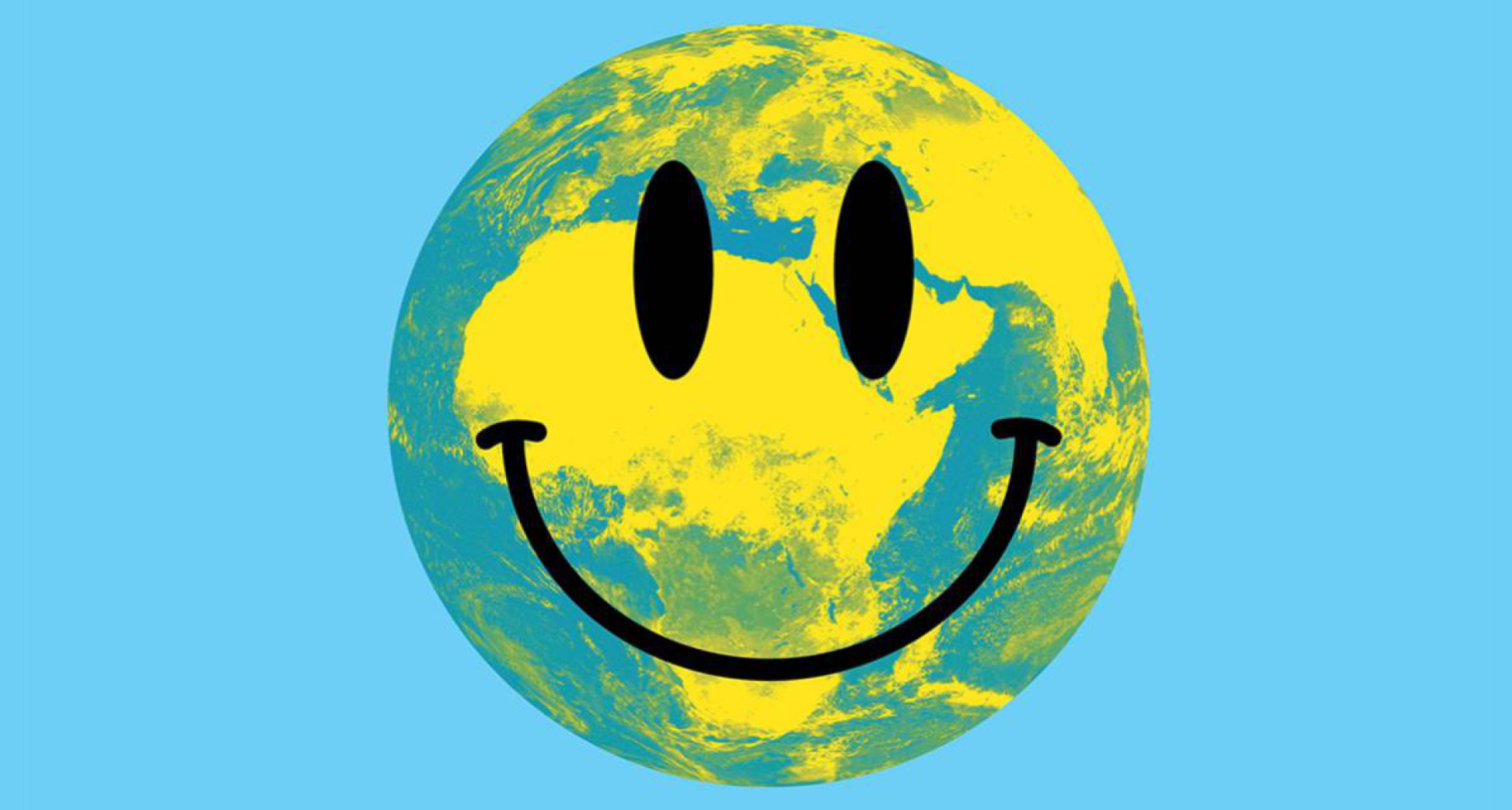Goodbye to a bad year? 42 good news to start 2021 with optimism. A list of positive data for the new year, in the ‘newsletter’ of Kiko Llaneras.
This year I close it like last, with a list of data that is not exhaustive or impartial: it only contains good news.
We have had a bad 2020. The worst in decades for many countries: a pandemic has killed tens of thousands of people in Spain, Mexico or Colombia. If you have been lucky, you will suffer the economic crisis and the global setback. If you haven’t had it, you will have lost someone.
But it is possible to be optimistic. This pandemic is typical of the 21st century, because it feeds on our hyperconnection and jumped from Wuhan to La Gomera in four weeks. But there is also futurism in your defeat: the fastest vaccine in history will save millions with a technology unthinkable when you went to high school.
And isn’t it science fiction to confine a continent and almost sustain its economy? The virus has been held back by decades of progress. But how many deaths would this epidemic have caused in 1970? The 1918 flu killed 50 million.
The other reason for making the list is the same as last year. I want to combat a paradox: Most people believe that the world is going backwards and that we are headed for chaos, although the data makes it clear that this perception is false. The world doesn’t get worse, it gets better .
This does not mean that it is a perfect place. Not even a good place. We suffer injustices, wars, hunger and violence. A minority of the population owns most of the wealth, while 9% survive on less than two dollars (1.6 euros) a day. Poverty is everyday. But of all the global scenarios that we have known (not imagined or desired, but known) this is the best.
Recognizing that we progress makes many people uneasy, because they fear it will make us conformists. But I think it’s just the other way around: to keep walking it is useful to feel that you are moving forward.
The 42 good news
1. ? The best: the fastest vaccine ever. The principle of the RNA vaccine was made in days, in a laboratory that only needed to download the genome of the virus by computer (without having a single molecule of the pathogen in its laboratories). | THE COUNTRY
2. ? The most important chart of the year? It is from the scientific article that demonstrates the efficacy of the Pfizer and BioNTech vaccine. It represents how two groups are becoming infected with covid, the placebo (where the cases grow) and the vaccinated group (where they hardly do so). | Insight
3.? The global economy has doubled in size in 30 years. It is possible that it will contract 4% in 2020, due to the pandemic; but the poverty rate will still be a third of what it was in 1990. | Axios
4. ?? China lifted 50 million people out of poverty. In the last five years. | Bloomberg
5. ?? We live longer lives. Life expectancy went from 48 to 73 years between 1950 and 2019. Since 2000? It increased seven years worldwide and ten years in Africa (from 53 to 63). | OWiD
6. ?? Fewer children die. In 1960 one in five minors died before reaching their fifth birthday; now 24 out of 25 survive. | OWiD
7. ♥ ️ And not just children: people of any age live longer. Life expectancy at ten years has lengthened 14 years since 1950. In England, for example, people in their 60s will live to be 84. | Max roser
8. ??♀️ The biggest wave of the year was surfed by a woman. The Brazilian Maya Gabeira did it, in Nazaré (Portugal), with a wave of 22 meters. Another woman will be the first to head a large Wall Street bank, Jane Fraser, at Citigroup. | ‘NYT’ | FT
9. ? Last year there were fewer deaths than ever on Spanish roads. They are down 40% since 2009. And in 2020 they will go even lower. | DGT
10. ? Young Spaniards drink less. The 15- or 16-year-olds who get drunk are half the number in 2010 (10% instead of 21%). | HBSC
11. ? Average income rose in Spain. It went from 15,000 euros in 2014 to 17,000 euros in 2019. The percentage of Spaniards at risk of poverty fell slightly, from 22.2% to 20.7%. | INE
12. ⚖️ And global inequality was reduced. Income differentials between rich and poor around the world peaked in the 1980s, but have since narrowed. | Milanovic
13. ? People return the wallets. Scientists lost thousands of wallets to verify that most people return them, especially if they carry money. It is altruism (in part). | THE COUNTRY
14. ? German refugees are doing well. In 2015, the country opened its borders to 1.7 million refugees. Five years later? More than half work and pay taxes; 10,000 go to university; and 80% of their children feel loved at school. | ‘The Guardian’
15. ??? Vaccines work. Since 2000, deaths of children from vaccine-preventable diseases have been cut in half. Those with hepatitis, for example, are five times less. | OWiD | who
16. ? In addition, vaccines are getting cheaper. The cost of immunizing a child in a poor country has dropped from $ 25 to $ 18 (from € 20.4 to € 14.7) since 2013. | FC
17. ? HIV infections have fallen 23% since 2010. The number of people with access to retroviral treatments has tripled since 2009. They are received by 68% of those infected. | UNAIDS
18. ? A new treatment to prevent HIV in women doubles the effectiveness of the previous one. And more will be used: instead of a daily pill, it is given with six injections a year. | ‘NYT’
19. ? Cancer mortality fell by 15% between 1990 and 2017. Mainly thanks to the fact that many people have stopped smoking. | OWiD
20. ?? There are fewer dementias (not more). In Europe and the United States, the risk of suffering from any of these diseases is 13% lower than in 2010. | ‘NYT’
21. ? Cars that fly? It’s hard to believe at this point – and it’s debatable that they’re a good idea – but a Japanese company has unveiled a flying car that it intends to bring to market. | ‘NYT’
22. ? New technologies against crime. In three years, genetic genealogy has solved 200 homicides and rapes in the US Some cases have been open for decades. | Future Human
23. ??? Computer-aided learning works. In rural China it served to reduce by 78% the differences between what rural and urban students earn when they grow up. As one student [of the program] says: “I feel like a student in an elite school in a modern city.” | EV
24. ? Robots write. This week a newsletter let an algorithm write its news, to be tested. They gave it three words and what was invented does not sound bad at all, it said like this: “[The moon is]… officially a ‘failed state’, according to a new study that describes 14 months of activity on the moon. The authors of the work attribute a significant part of that recoil to the allusion system of asteroids and solar-panel failures. ” | Orbital Index
25. ? The boom in artificial meat continues. Companies that want to produce meat in laboratories are multiplying (cultivating bacteria instead of fattening animals). The reasons? Stop killing 70,000 million chickens a year and take care of the environment. | Axios
26. ☀️ Solar energy costs 10 times less than in 2009. Wind energy costs a third. | OWiD
27. ? In Spain, renewables produced 44% of electricity. More than the European average, more than the previous year, double that in 2007 and triple that in 2000. | IEA | REE | EIG
28. ?? Europe produced more renewable electricity than fossil fuel. It was the first time in history, and the sector reduced its CO 2 emissions by 23%. | Ember
29. ? Air quality improved. Thanks to the environmental measures of the European continent, in 2018 some 60,000 premature deaths will have been avoided compared to 2009. | EEA
30. ⚡️ 60% of the cars sold in Norway are electric. Another 25% are hybrids. Five years ago electrics were not one in ten. | EV
31. ? Bicycle use rose 50% in Paris. Cyclists in the department of the French capital make 840,000 trips a day. | ‘Forbes’
32. ? Bogotá will start using hundreds of electric buses. It will be the largest fleet in the whole of America and will serve 300,000 citizens on 40 routes. | Mixx.io
33. ? Could the population stop growing in the middle of the century? The number of children per woman has fallen from 4.7 in 1950 to 2.4 in 2017. | BBC
34. ? But that of Iberian lynxes increased 23% this year. The number of specimens in the Peninsula has increased from 94 animals in 2002 to almost 900. It is a success. | THE COUNTRY
35. ?♀️ Women run the marathon faster. To be among the 250 fastest in the US you have to go down from 2 hours and 35 minutes, instead of the 2 hours and 45 minutes that were enough in 2000. | ‘NYT’
36.?? Sudan criminalized female genital mutilation. According to the United Nations, 90% of the country’s women still suffer from it, but now it will be a crime punishable by jail. | BBC
37. ? More girls go to school. Since 1995, girls around the world who receive a secondary education have gone from 73% to 89%. The percentage of university students has tripled. | Unesco
38. ???? More time caring for children. Between 1965 and 2010, Spanish parents (men) went from dedicating just 10 minutes a day to their children, feeding, cleaning or playing with them, to dedicating a little more than an hour to them. | OWiD
39. ? Sometimes you don’t have to go far. A Swedish photographer had to cancel all his work abroad due to the epidemic; in return, he toured his homeland taking fantastic photos. | ‘ NYT ‘
40. ? Other times yes: China sent a mission to Mars. The probe should land on the red planet in 2021. | ‘ NYT’
41. ? SpaceX became the first company to take humans into space. Two astronauts spent nine weeks at the ISS station before landing back: “Welcome to planet Earth. Thanks for flying with SpaceX. ” | ‘FT’
42. ?♂️ “Our people can fly”, thought millions of people watching a viral video on the Internet. It starred an 11-year-old Nigerian boy who dances ballet barefoot in the Lagos drizzle.
The Great Writer and The Passionate Poet As Well, He Graduated from University Of Florida in Journalism and Brad have around 12 years of experience in news and media section.

